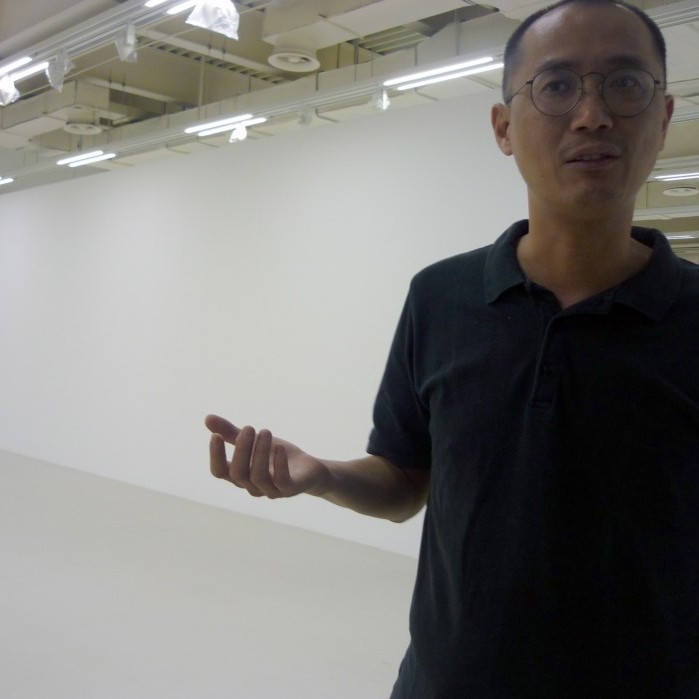Our speakers ran the gamut: from informative, engaging, and inspirational to blatantly self-promotional. Heinz-Norbert Jocks of Kunstforum International conducted one of the few true workshops — meaning that the instructor and students were engaged in dialog throughout the session instead of a lecture followed by questions. We were given a unique opportunity to watch him conduct an interview with Jens Hoffmann, which showed us first hand many of the techniques discussed the day before. This level of Platonic interaction was much more useful and engaging than, for instance, the photographer Liu Heung Shing’s approach to a dialog, where he asked us to individually share our frustrations of being an art journalist. There were over twenty journalists in the room and everyone had something new to add. It was slightly discouraging to hear all of the problems peers face in the field, one after another, with no interruptions, and we all were eager to hear how Liu was going to address our concerns. Once the microphone had made its rounds, however, we were out of time. His final words to the group were optimistic — if we are really good at what we do, success will come — but this obviously neglected all of our numerous questions and concerns, and most of us were left unconvinced that simply doing good work will solve the problems, especially when the problems are what prevent us from optimal performance.
Participants were encouraged to conduct interviews with the artists, and the hardworking organizers of our workshop kept us informed as to the dates the artists were in Shanghai and their coordinators’ contact information. Excited by the prospect of meeting artists I admire and the chance to try out some of Jocks’ interviewing techniques, I frantically tried to set up interviews. I understood that artists were stressed about their installations, so not wanting to inconvenience anyone, I decided to focus on Rashid Johnson who was staying in Shanghai after the opening and with whom I would not have a language barrier to work through. After a reassuring email from his coordinator to arrange a meeting, I finally got a second reply from the coordinator a week later, one day before the artist’s departure: “I don’t really understand it…with best regards!” It turned out that a language barrier (either genuine or feigned, I’m not sure) still managed to result in miscommunication.
One week into the art writers and journalist workshop, the second phase of the Academy began with the start of the Curatorial and Art & Technology programs. Our original curriculum claimed to have one afternoon dedicated to “interaction with the students in Curatorial Workshop” but this was dropped from the final schedule. It turned out that our conflicting timetables, unfortunately, prevented any interaction. Their presence was keenly felt, however, when our table surface shrunk by a third during the valuable panel discussion between Liu Heung Shing, Boris Groys, Rasheed Araeen, Holland Cotter, and Madeleine O’Dea because the other workshops needed more furniture.
In the end, my expectations for the workshop were actually fulfilled by a friend and peer who organized an informal dialog between workshop participants first as part of Shi Qing’s installation “Shanghai Electricity Shopping Mall” and which later continued at a party that evening. We started off by sharing our motivations for attending the workshop, our favorite speakers, and our impressions of the Academy as a whole, and then drifting towards more general concerns about art writing, during which we traded notes about different writing processes and research methods. Honestly, this conversation among peers that occurred independently of the Academy was probably the most valuable experience for a lot of us. Of course, it wouldn’t have happened at all if we weren’t all brought together by the workshop and had the common experience of attending the lectures and exhibitions. One supposes the fact that the Biennale did make this attempt at an education program is a positive step and one can hope that the bumps will be smoothed out next time.



